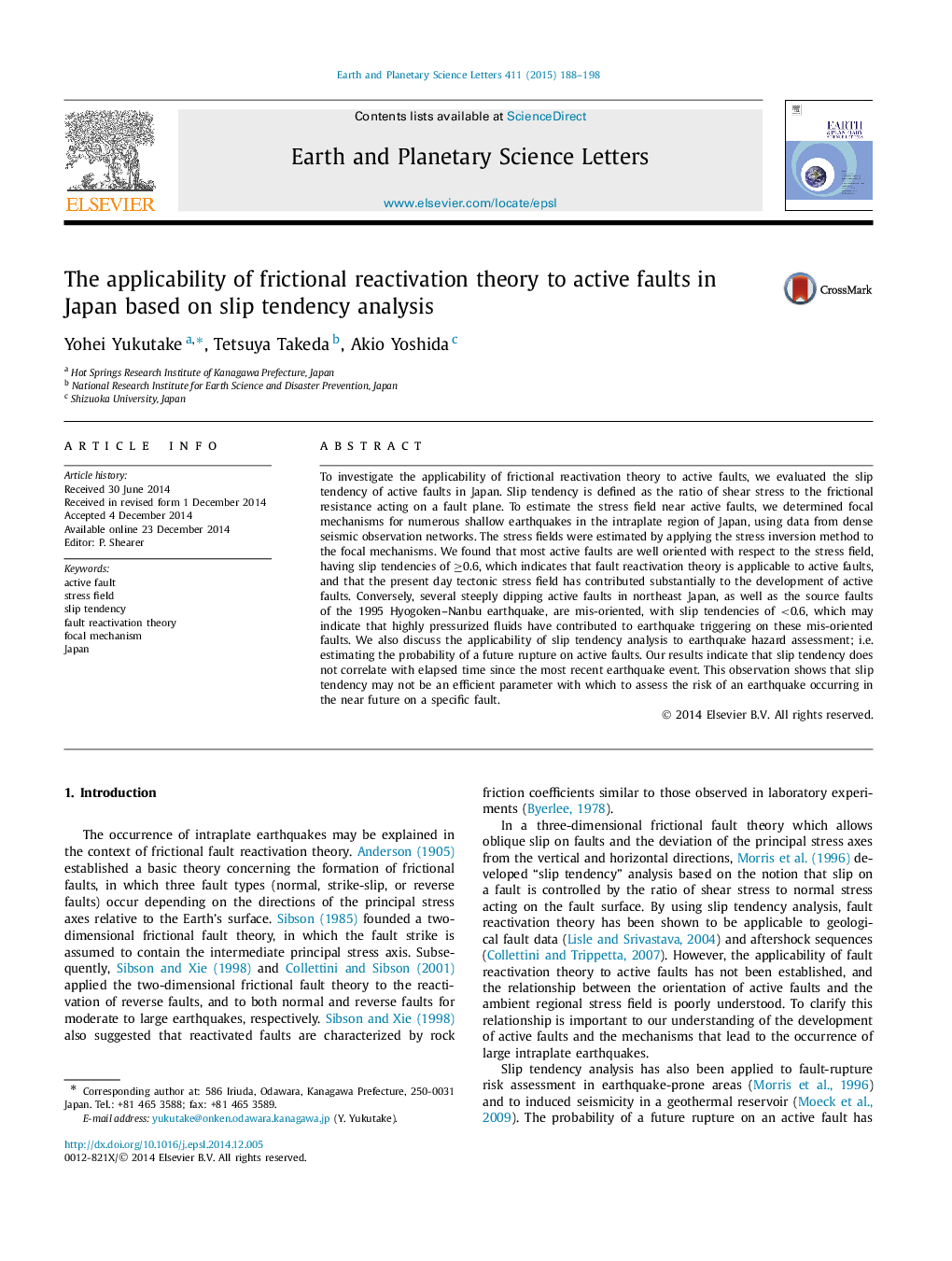| کد مقاله | کد نشریه | سال انتشار | مقاله انگلیسی | نسخه تمام متن |
|---|---|---|---|---|
| 6428422 | 1634745 | 2015 | 11 صفحه PDF | دانلود رایگان |
- We estimated stress fields around active faults from numerous focal mechanism data.
- We obtained the slip tendencies of active faults in Japan.
- Most active faults are well oriented relative to the regional stress field.
- Fault reactivation theory is applicable to active faults.
- Current stress field plays an important role in development of active fault.
To investigate the applicability of frictional reactivation theory to active faults, we evaluated the slip tendency of active faults in Japan. Slip tendency is defined as the ratio of shear stress to the frictional resistance acting on a fault plane. To estimate the stress field near active faults, we determined focal mechanisms for numerous shallow earthquakes in the intraplate region of Japan, using data from dense seismic observation networks. The stress fields were estimated by applying the stress inversion method to the focal mechanisms. We found that most active faults are well oriented with respect to the stress field, having slip tendencies of â¥0.6, which indicates that fault reactivation theory is applicable to active faults, and that the present day tectonic stress field has contributed substantially to the development of active faults. Conversely, several steeply dipping active faults in northeast Japan, as well as the source faults of the 1995 Hyogoken-Nanbu earthquake, are mis-oriented, with slip tendencies of <0.6, which may indicate that highly pressurized fluids have contributed to earthquake triggering on these mis-oriented faults. We also discuss the applicability of slip tendency analysis to earthquake hazard assessment; i.e. estimating the probability of a future rupture on active faults. Our results indicate that slip tendency does not correlate with elapsed time since the most recent earthquake event. This observation shows that slip tendency may not be an efficient parameter with which to assess the risk of an earthquake occurring in the near future on a specific fault.
Journal: Earth and Planetary Science Letters - Volume 411, 1 February 2015, Pages 188-198
